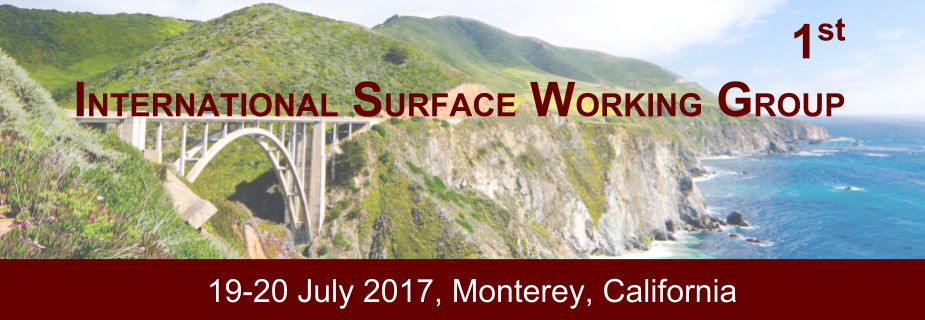

|
|
The International Surface Working Group An International Surface Working Group meeting was proposed by the International TOVS Working Group's sub-group on surface remote sensing and modelling at its 4th workshop held in Grenoble in March 2016. This new working group will meet for the first time in Monterey, California in July 2017, and will aim at becoming forum to collect and provide expert recommendations and coordination for observations providing information about the earth's surface. This initiative has been supported by the Earth surface community, recognizing the need for a group addressing surface Earth Observation (EO). This International Science Working Group would integrate outcomes from existing groups with a new effort for the Earth's surface, gathering requirements that are specific to surface observations supporting the monitoring and understanding of this complex and intertwined component of the Earth system including land, vegetation, snow, ice, and coastal and open waters. A coordinated effort to bring concerns and advances from the scientific community could bring a clear focus by reviewing what technology has reached a maturity level to be directly used in surface monitoring, data assimilation and modelling applications. We invite you to participate in the inaugural International Surface Workshop. This will convene on 19-20 July, 2017. Note that the prior day on 18 July, 2017 there will be an SMAP Weather Focus Session. We encourage participants to attend both meetings which will take place at the Moss Landing Marine Laboratory in Moss Landing, CA located at the center of Monterey Bay. The workshop will be inclusive of techniques and observing over all surfaces, land, water and sea-ice; however, there is an emphasis over inland surfaces, including soil, snow and ice as key elements of the global water cycle. This workshop seeks to bring together scientists working on areas which are particularly poorly monitored by current satellite missions. A closing session of the meeting will be used to gather and put forward recommendations on those surface properties where continuity in the monitoring is lacking a cooperative international advocate. Particular examples include satellite-based estimation of soil moisture, snow, land surface temperature and surface water body extents. This group will bring forward a continuity plan using existing systems and the ones planned which would fill this application gap in the future. Sustained development and preservation of Earth Observations for land applications would be a primary effort to fall upon this group. After the conclusion of the meeting the actions and recommendations of this group will be prepared in a report and delivered at the upcoming 21st International TOVS Study Conference (ITSC-21) in Darmstadt, Germany 29 Nov-05 Dec, 2017, as well as to WMO and to the Coordinated Group for Meteorological Satellites (CGMS). The ITSC is organized by the International TOVS Working Group. One of five current International Science Working Groups, which are recognized by the CGMS. The others are Precipitation (IPWG), Clouds (ICWG), Radio Occultation (IROWG), and Winds (IWWG). The World Meteorological Organization (WMO) is a member of the CGMS and works closely with satellite operators in the Coordination Group for Meteorological Satellites (CGMS) to get global meteorological and related user needs for satellite data addressed by satellite operators. We believe the Earth surface community has recognized the opportunity of a sister group addressing surface Earth Observations (EO) and we believe the effort and support from this group can be directed to a proposal for creation of such a body to the CGMS.
Important Dates
Venue
Registration
Meeting topics
See the announcement in pdf format for details.
|